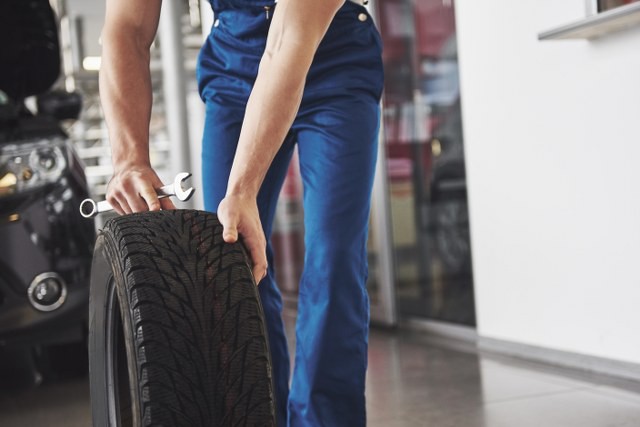
5 Factors to Consider Tyre Wear on the Outer Edge
As
most drivers are aware, our cars' tyres serve a critical part in keeping
traction on the roads we travel on. Our tyres deliver torque to any given
surface while also preventing dangerous slides or skids.
Tyres
do, however, wear out with time, requiring the buying of suitable replacements
of the same size. However, a vehicle's tyres might wear unevenly under certain
conditions, necessitating replacement sooner rather than later.
Uneven
tyre wear, which develops at the outer edge of a tyres tread, is one of
the most prevalent kinds of MOT failure, according to an online MOT history checker.
Outside-edge
tyre wear, like inside-edge tyre wear, is not only dangerous, but it can also
be uncomfortable and costly. After all, no one wants to write off a pair of
tyres any sooner than necessary.
Have
your tyres examined before your next MOT testing service to ensure they are not worn
out, since this will cause the MOT test to fail.
Outside Tire Wear: What Causes It?
A
variety of factors can contribute to outside tyre wear, each of which needs
specific attention. When attempting to rectify the condition, it's important to
understand each possible source of outer tyre wear.
A
few of the most typical reasons of tyre wear on the outer are as follows:
1. Wearing Under-Inflation -
In a short period of time, an under-inflated tyre will begin to show rapid wear
around the outside margins of its tread. This is owing to the fact that when a
tyre is under-inflated, the outside "shoulder" of the tread is
subjected to greater tension. A search of your car's MOT history will indicate
that worn out tyres are a regular reason for a failed MOT test. Similarly, an
under-inflated tyres inside edge will often exhibit evidence of increased wear.
This problem can be resolved by properly inflating your tyres to the
manufacturer's recommended pressure.
2. Extremely Positive Front
Camber - Camber refers to the inward/outward tilt of a vehicle's tyres in
relation to a vertical axis. Any form of excessive camber can cause uneven tyre
wear. Premature inner/outer edge tyre wear is the most common symptom.
Excessively positive camber is frequently the fault for considerable outer edge
tyre degradation. In the vast majority of situations, this problem can be
resolved with a simple alignment. Check MOT
certificate of your car for the expiration date and make an appointment
with a tyre specialist ahead of time. However, it's also a good idea to rotate
your tyres every now and again to equal out any uneven wear over time.
3. Incorrect Toe Adjustment -
On a horizontal axis, a toe measurement specifies the inward/outward angle of a
vehicle's front or rear tyres. Improperly set toe can cause a variety of
problems, including uneven or accelerated tyre wear. This type of wear is most
commonly seen at a tyres edge. To prevent future wear, a vehicle must be
aligned by qualified professionals to fix this problem. If the tyres on the affected
car aren't worn to the point of replacement, it's also a good idea to rotate
them. If you check
MOT history of your vehicle, you will realise that this issue is a
common reason for a MOT test to fail.If an improper toe is found to be the
source of abnormal tyre wear, the front end of the vehicle should be inspected
for evidence of wear.
4. Wear on Suspension
Components - In some cases, worn suspension components can also cause excessive
tread wear around the edges of a vehicle's tyres. Suspension-related wear is
generally seen as cupping or scalloping inside the tread pattern of a tyre.
This form of wear can cause a tyres tread to peel off in a predictable
manner.Though this sort of wear affects most tyres in their totality, it
usually manifests itself first around the tread pattern's outside border. In
order to repair this form of wear, any worn or otherwise damaged suspension
components, such as a vehicle's shocks and struts, must be replaced.
5. Component Damage - Damage
to one or more of a vehicle's major steering or suspension components can
result in irregular tyre wear of any kind. A collision, regardless of severity,
is the most common source of this injury. Under some conditions, even slamming
into a curb at high speeds can do significant damage to a vehicle's steering
and suspension components. Towing an excessive amount of weight on a trailer,
regular off-road driving, poor road surfaces, potholes or past poor
installation of front-end parts can all cause damage to a vehicle's steering
and suspension components.
Is It Safe to Drive with Tyres That Have Abnormal Outer Edge Wear?
The
degree of the wear determines whether or not it is safe to drive on one or more
tyres with visible outer edge wear.
If
the abnormal wear has just begun and is mild in appearance, the tyre can
typically be saved by rotating it to a different wheel end position. Of course,
the underlying source of this excessive wear must be addressed as well.
Any
tyre whose structure has been undermined by abnormal wear, on the other hand, should
be replaced without delay. This includes those that have begun to show severe
wear on the exterior edges. If secondary rubber (structural non-tread rubber)
or belting material is exposed, the tyre should be replaced right away.